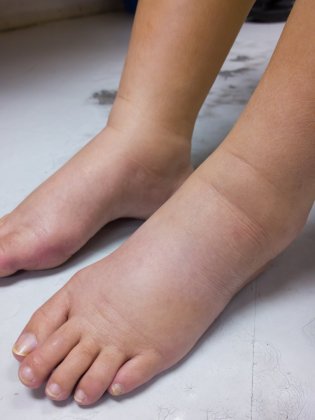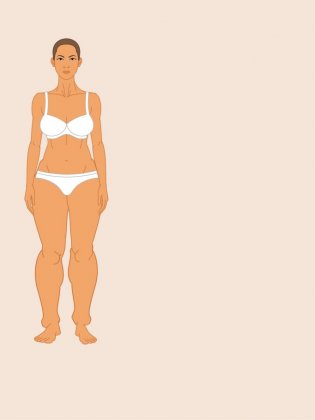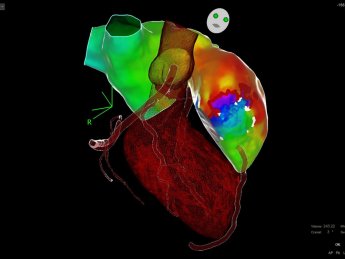What are lymphedema and lipedema?
Causes, Symptoms, Diagnosis and Treatment
What is lymphedema?
Lymphedema, also known as lymphatic edema, is chronic swelling in the arm or leg caused by a lymphatic vessel malfunction. The vessels are no longer able to drain lymph fluid from the body, which causes the fluid to build up in the subcutaneous tissues.

What causes lymphedema?
Lymphedema can be primary, meaning it appears spontaneously with no known cause. Primary lymphedema frequently occurs in young women in their legs, often affecting one leg more than the other. When it involves the entire leg up to the thigh, it is typically unilateral.
Lymphedema can also be secondary, with a range of causes such as cancer, surgery or an accident. The most common form of secondary lymphedema affects the arm and occurs in approximately 20 percent of women who have undergone axillary lymph node dissection to treat breast cancer.
How is lymphedema diagnosed?
Our vascular medicine specialists have sufficient expertise to diagnose lymphedema based on a clinical exam. A specific sign for lymphedema is the Stemmer sign: if the examiner is unable to pinch the skin of the dorsum of the second toe, this is an indicator of the disease.
The diagnosis is confirmed by performing a lymphoscintigraphy of the concerned limb(s). This imaging exam, conducted in our nuclear medicine department, shows lymphatic drainage in the limbs, making it possible to determine whether fluid has built up in the arm or leg due to a problem with the lymphatic system.
What is lipedema?
Lipedema is a debilitating chronic disease for many women, characterized by a gradual onset that begins in adolescence. The disease, which was misunderstood for many years, may affect one in ten women. It is likely that people with lipedema have a genetic predisposition to the disease, whose symptoms range from mild to severe.
Lipedema is an abnormal accumulation of fatty tissue under the skin. It usually appears symmetrical in shape across both legs and typically progresses from the ankles up to the knees or thighs. The condition never affects the feet, which distinguishes it from other diseases such as lymphedema. Lipedema may also occur in the arms.
Lipedema is not to be confused with obesity, as it can affect people who are not overweight.
In patients with lipedema, the fatty tissue between the fat lobules is filled with water. This leads to a specific “ping-pong ball” texture in the affected areas. The disorder can weaken the microcirculation, resulting in a tendency to bruise easily. It causes severe discomfort and hypersensitivity in the affected limbs, combined with aesthetic and emotional distress.

What treatments are available for lipedema?
The main treatment for lymphedema and lipedema is compression therapy. Our vascular medicine specialists can suggest different compression solutions that are suited to the patient's lifestyle and morphology, including donning aids and compression garments for sports.
Maintaining a healthy weight and good eating habits are essential points that are addressed on a case-by-case basis. Regular physical activity is extremely important.
Lymphatic drainage by a physiotherapist can also be helpful. Radical treatment for lipedema is surgery.
Make an appointment with our vascular medicine team
Learn more

